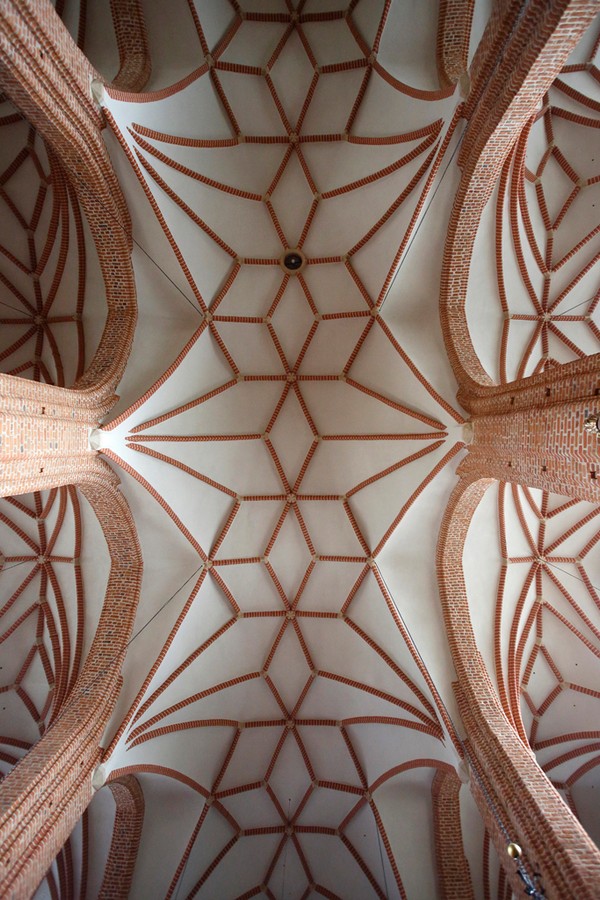AMBO, CHOIR, VAULT
The Opole Cathedral is an exceptionally beautiful example of sacral architecture from the Silesian Gothic period. The three-nave red brick Cathedral is 60 meters long, and 26 meters wide. The building is covered with a high-pitched copper roof. Its 18 meter high interior is finished off with a star vault, supported by 5 pairs of solid pillars. Look at it for a while and admire the precise and regular shapes forming a pattern of the vault - just like in a kaleidoscope …
Found just below the beautiful vault, in the rear part of the collegiate church is a choir. Expanded in 1914, it draws the attention of not only sound lovers, but also architecture connoisseurs. During the rebuilding, the gallery under the choir received a beautiful crystal finial.
As far back as in 1895, the followers during a mass and service could hear the 32-voices church organs. These organs standing there now were ordered by the unforgettable parish priest of our collegiate church, Józef Kubis. In 1941, they were manufactured by Rieger company from Czech Krnov.
During the last renovation of the organs in 1996, powerfully voiced “en chamades” pipes were mounted. The experts stressed that they sounded beautifully and emitted an enormous variety of sounds. You can use them to play romantic renaissance, baroque and contemporary pieces. Everyone who at least once participated in a service in the Opole Cathedral knows that they emit dignified clear sounds, which constitute a unique compliment to the spiritual experience.
If you look on the other side of the temple, you can see that apart from the beautiful monumental main altar, a meticulously made ambo can be found. There is a figure of Sybilia holding a shield of the Holy Spirit and the Book of the Gospels with the names of evangelists. It was founded by a community of vicars, and was made in a classicist style in 1805 by Hans Echter, a Wrocław stucco decorator. It only cost 1500 thalers.
Watching the interior of the collegiate church, it is worth to pay attention to two more elements. Firstly, there are Stations of the Cross on the walls of the both side naves. They were painted on fourteen large canvases in 1737, by a painter Jana Jerzy de Kont from Opawa.
Secondly, there are two large two-colour paintings made using an interesting technique called sgraffito. They were painted in the 60’s of the XX century. Their author was a Cracow artist named Stanisław Szmuc.
Sgraffito is an old technique used to decorate walls, particularly popular during the renaissance period. It is produced by removing parts of previously applied layers of plaster, tinted with contrasting colors. Those in the Opole Cathedral are strictly connected with the Cathedral’s name (Holy Cross). They depict Saint Helena who finds the Holy Cross in 326 A.D. in Jerusalem, and the diseased who returns to health by touching the relic of the cross. However, the themes of the sgraffitos on the southern wall include the Last Supper, as well as saints, and the blessed connected with Silesia: Saint Wojciech, Saint Hedwig of Silesia, blessed Czesława, blessed Czesław and Saint Jacek.
Only those who embraced all the described architecture and décor elements witha long panoramic view, can feel the real vibe of the Opole collegiate church.


 Polski
Polski Deutsch
Deutsch Český
Český